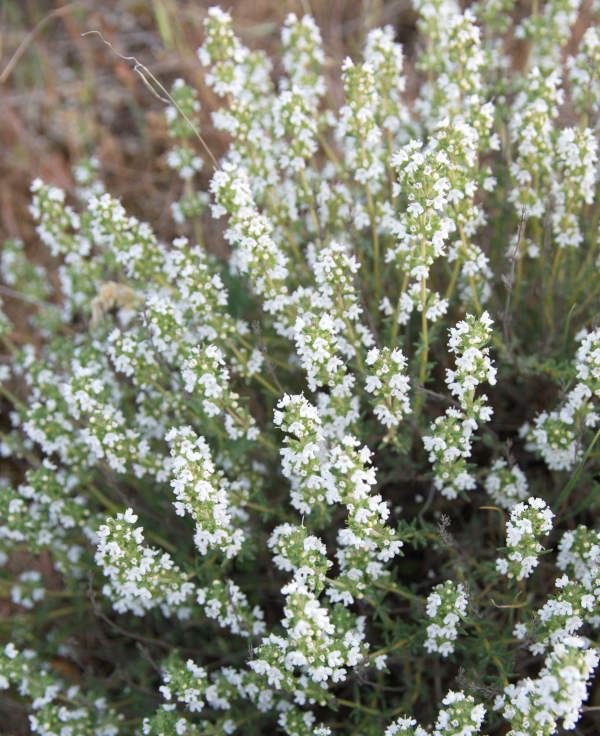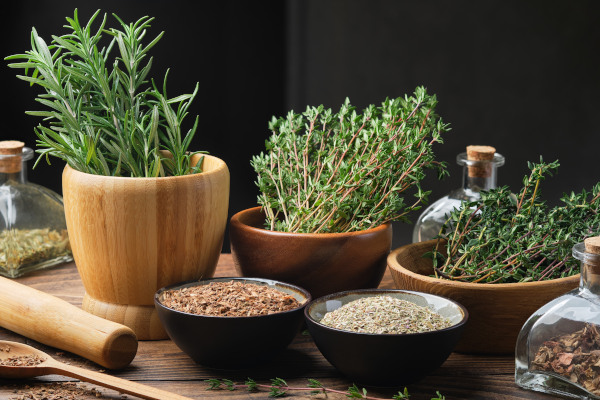How to grow Thymus
While known in the horticulture world as Thymus, it is more commonly known as Thyme and is frequently used in plenty of households. Thymus has 350 varying species and has humble roots as a Mediterranean plant.
With dark green and golden foliage, and white, purple and pink flowers, Thymus is one of the minority of plants best-known for their leaves rather than their flowers. Natural pollinators, Thymus brings bees and butterflies to your garden.

Key Information
Soil pH
Position
Hardiness

Where & when to plant Thymus
Thymus enjoys well-drained soil, and its leaves provide delicious seasoning for the kitchen. A combination of well-drained soil and full sun will encourage the strongest scents and bright flowers - both of which bring out the best in the plant. Pick Thymus leaves just before flowering for the best aromas and taste. Grow Thymus vulgaris for the best meat seasoning or Thymus citriodorus for its light lemon fragrance which is the perfect accompaniment to fish dishes.
Thymus is low in height and will happily grow in containers and hanging baskets. Small pots of Thymus can thrive indoors too, as long as there is plenty of sunlight. Finally, Thymus can also be used for edging, or to fill paths and cracks.
Find a position for your Thymus plant in full sun to enhance the aroma and essential oils. Thymus can be planted in containers, gravel, paving cracks or any garden position with well-draining soil and full sun. If planting in the ground, raise the soil slightly or add sand to aid drainage. However, Thymus will need protection from cold winds and wet winters - if this is not possible, you can treat it as an annual plant.


How to plant Thymus
While Thymus can be grown from seed, it may struggle to establish. So, the best way to get started is with a young plant. Plant in well-draining soil in late spring. If planting multiple Thymus plants, give each about 30cm of space between each to spread out and grow
Plant in free-draining soil and water in. Remember not to add to a mixed container, as Thymus will struggle
Do not over-water Thymus. Once established, it can be left unwatered unless there is an extended period of drought or hot weather.
What to plant with Thymus
It is important to the health of your Thymus to refrain from adding it to a mixed container. Instead, choose herbs with similar growing conditions. Rosemary, sage and French tarragon are all good choices due to their mutual love of full-sun and moist soil.



How to care for Thymus
Pruning & Deadheading
Trim back your Thymus plant once flowering has finished. If you do not do this, your plant may become woody. As an evergreen, you can pick the leaves from Thymus whenever you would like, but the best time to pick the leaves is just before the flowering period in early summer.
Watering
Once your Thymus is established outdoors, it will not need watering! If you overwater, your Thymus may succumb to root rot. If you are growing Thymus in a container, it may benefit from a weekly feed of liquid seaweed, or similar.
Cold Protection
While the Thymus can manage in extended dry and cold temperatures, it does not enjoy wet conditions. In the UK, it is better to bring your Thymus indoors during wet periods and the winter frost. Keep them unwatered and they should be ready to plant outside again in the spring.
Pests & Diseases
While generally disease-free, the rosemary beetle may cause a problem for Thyme plants. This is a form of beetle that mainly enjoys Rosemary leaves and has a general penchant for herbs. Rosemary beetles tend to lay eggs at the beginning of the autumn which will hatch within 10-14 days or so. The beetles will then feed on the plants and then enter the soil, and two weeks later the cycle begins again! Look out for holes in leaves and small, elongated eggs as an indicator of this.
How to propagate Thymus
The most effective way of propagating the Thymus plant is by softwood cuttings. Using sharp scissors or secateurs, cut off a long length from a healthy, established plant.
Take the leaves off the bottom half of the cutting - ideally at least 5cm from the bottom. Then gently scrape at the bottom half of the cutting to cause damage and encourage growth. You only need to take off a small layer of the plant for this to be effective.
Dip the stem in water as it will lose moisture quickly and prepare potting soil in a pot. If you are planting multiple cuttings, give each plenty of space to grow. Add your cuttings to the soil, burying the ‘naked’ part of the stem.
Water the soil, add a plastic or polythene bag over the plant to encourage humidity and keep the soil moist while it is growing. After around 6-8 weeks, your cutting should be ready for transplanting in its new outdoor soil.
Common Thymus Questions
What is Thyme used for?
As a herb, thyme leaves are used to add flavouring to food. However, Thymus plants are all different and some may be more suited for eating than others. Low-growing shrubs are normally okay to eat, while climbing varieties may be trickier to harvest successfully.
What can you eat from the Thymus plant?
From common thyme (Thymus vulgaris), you can eat the leaves and the flowers. Although Thyme leaves might not taste great on their own, they can be added to various meats, poultry and fish dishes as a flavouring.
What type of thyme is best for cooking?
Thymus vulgaris is best used for meat recipes, whereas Thymus citriodorus is slightly lemon-scented and is perfect for chicken and fish meals.





